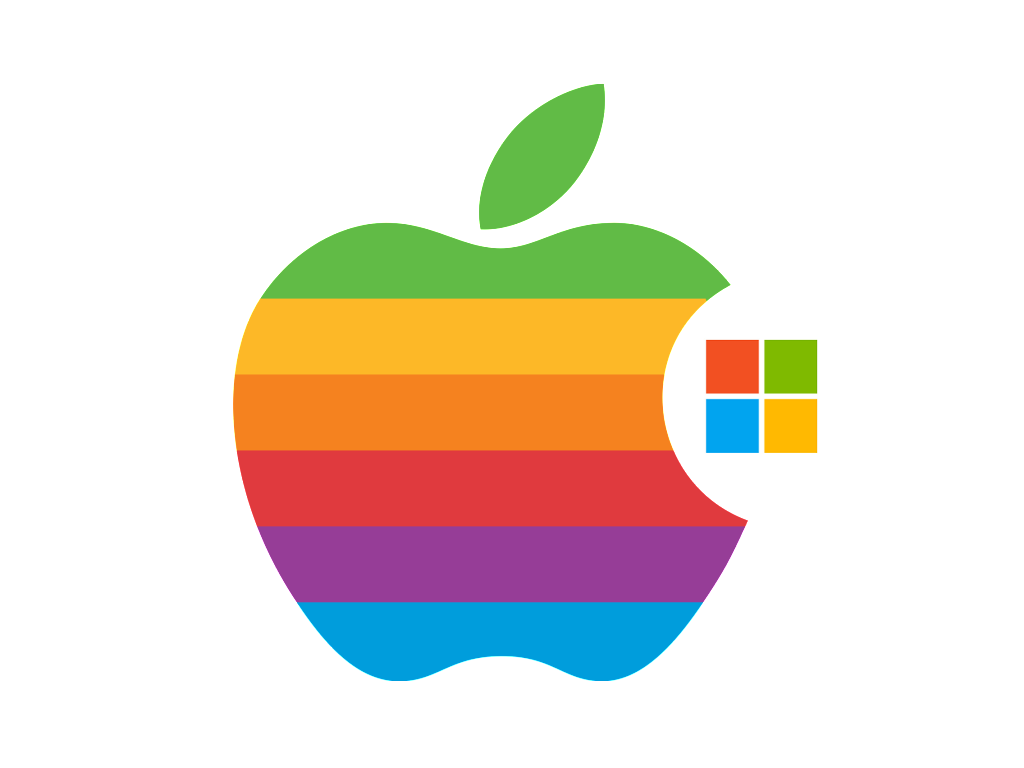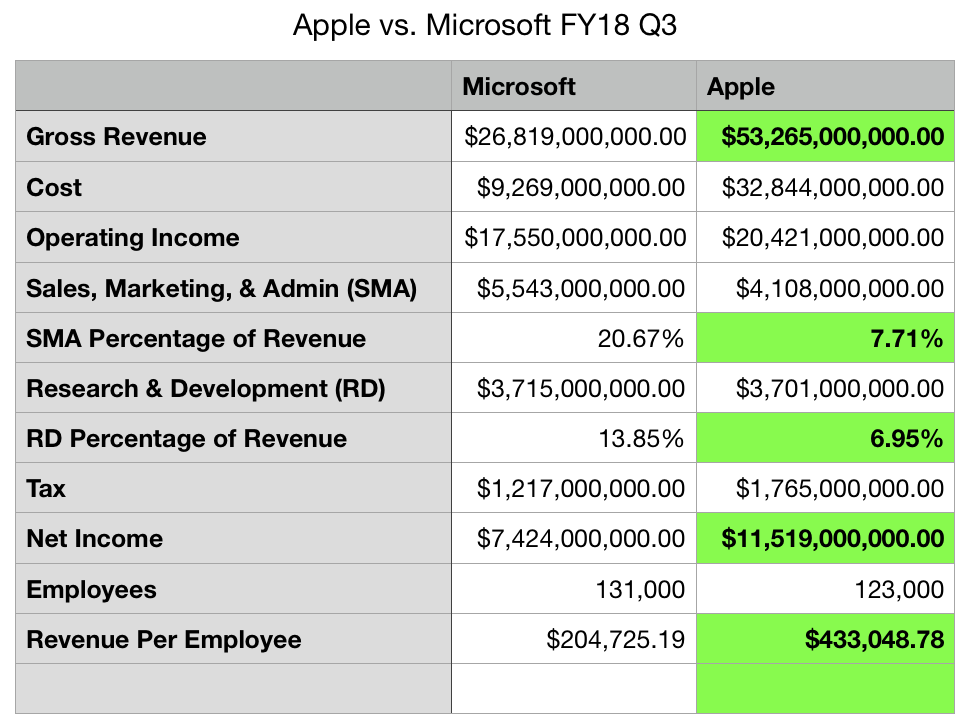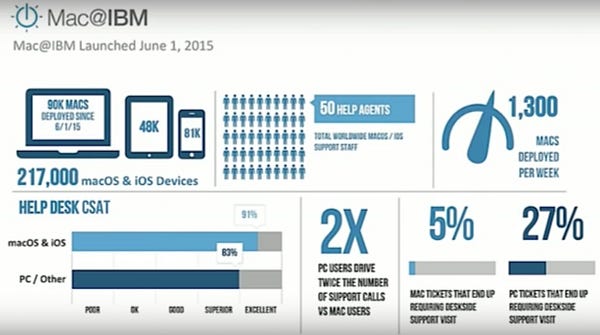Latest news about Bitcoin and all cryptocurrencies. Your daily crypto news habit.

On an individual basis, the merits of a Mac or a PC appear to be subjective and relative to necessity. Some prefer Macs because of their dedication to simplicity, security, and their free suite of software. Some prefer the low entry fee, hardware freedom, and the status quo inherent to PCs running on some flavor of Windows. Further and even though they have access to the same productivity software and platform agnostic cloud solutions, others seem to think that Apple products are reserved for creative types while PCs are for business folk. All are welcome to their opinion in this regard as either solution can still empower us in a manner that makes telepathy seem futile, but is there a way that we can tell which architecture is the definitive best? Yes and no.
While the individual merits of Macs and PCs are subjective, the virtues of a Windows PC such as the Microsoft Surface Laptop or a MacBook Pros are anything but when measured at scale by what matters to businesses; money. Although this is not to be mistaken as a proper definition of the word “better”, the solution which necessitates the least amount of overhead while enabling employees to generate as much revenue as possible tends to be viewed as the better solution in a capitalistic society and we can use this understanding as our yard stick to measure the merits of these solutions in turn.
For instance, pretend that you have a business digging holes and have the option of buying a bargain shovel for $15 or you can buy a quality one for $100 for your employees to use. While the bargain shovel is less expensive up-front, it is also built to a lesser standard than the quality shovel which means that it tends to dull and break much more frequently as a consequence. As such and after roughly 100 holes, the $15 shovel needs to be replaced ($.15/hole) while the $100 shovel will eventually break after 1500 ($.067/hole) which cuts their overhead per hole by more than half over time. Further, each worker equipped with a quality shovel can also dig 15 holes/hr while workers with bargain shovels can only manage 10 holes/hr, enabling workers with quality shovels to dig 50% more holes in the same time.
It almost goes without saying, but the better solution of the two is undoubtedly the quality shovel. Not only would your long-term overhead be half of what it would be with the bargain shovels, but your employees would also be 50% more productive overall with quality shovels. Obviously, not everyone has the means, the data, or the time to realize the merits of tools in this manner though. In order to make such decisions, you need a large sample base for both types of tools in order to see such trends for what they are and the same can be said of Microsoft Surfaces and MacBook Pros when comparing the two.
 https://www.apple.com/newsroom/2018/07/apple-reports-third-quarter-results/ | https://www.microsoft.com/en-us/Investor/earnings/FY-2018-Q3/press-release-webcast
https://www.apple.com/newsroom/2018/07/apple-reports-third-quarter-results/ | https://www.microsoft.com/en-us/Investor/earnings/FY-2018-Q3/press-release-webcast
With the above in mind and if you actually had two companies in similar markets with a lot of employees, with Company A operating entirely within the Apple ecosystem and Company M operating entirely within the Microsoft ecosystem, then the better of the two solutions would be evident and measurable as far as finances are concerned; no differently than it is with our mythical hole digging business. Ironically though, Microsoft and Apple can be used as an example as they are outfitted almost exclusively with their own architecture while maintaining a similar amount of employees with similar backgrounds. Although we do not know their overhead cost on employee tooling per se, we do know their annual revenue along with their overhead and how many employees they each have respectively and can put a decent picture together.
As shown above from their quarterly financial report from FY18Q3 and despite consisting of a similar amount of employees with similar backgrounds, your average Apple employee earns 2x more than your average Microsoft employee in the same work week while Apple as a whole generates twice the revenue that Microsoft does. Relative to revenue, Apple also spends 1/3 of what Microsoft spends on sales, marketing, and admin expenses while spending 1/2 of what Microsoft spends on research and development. Further and provided revenue per hour remained constant and although they already have roughly 8,000 more employees than Apple, Microsoft would have to double their workforce from 131,000 to 232,000 employees or work their current employee base twice as hard in order to generate the same amount of revenue as Apple. This isn’t negligable.
Although the stark contrast between Apple and Microsoft finances cannot be solely accredited to the quality of the tools which their employees are leveraging en masse, it would be foolish to imply that the overall quality of their products and the revenue they generate is indifferent to the quality of the tools used to make said products. Certainly, leadership, operational models, and industrial idiosyncrasies vary, but the tools people are leveraging en masse are deeply ingrained and matter just as much, especially to engineers, and their adoption can absolutely be the difference between an $800 billion dollar company and a trillion dollar company to say the least. In fact, these tools become so ingrained and essential that the productivity loss stemming from the downtime associated with them is the largest IT related expense to businesses dependent on them, even overshadowing the staff necessary to maintain IT as well as the initial cost of hardware and software.
 IBM Presentation @ JNUC 2016 https://www.youtube.com/watch?v=NLgvIarqdDM
IBM Presentation @ JNUC 2016 https://www.youtube.com/watch?v=NLgvIarqdDM
While we’re on the irony train though, it’s worth noting that IBM also noticed the ownership costs were reduced to 1/3 that of PCs on the Windows ecosystem by switching users to macOS ecosystem. While slightly more expensive upfront than an equivalent PC, products within the Apple necessitated significantly less ancillary software, less software updates, less management, less downtime, less support cases, and less support staff which is always more expensive than the initial cost of hardware and software in the end. Resultantly, IBM’s IT overhead cost per user after moving them to the Apple ecosystem went from roughly $21/user/month to $7/user/month.
All things considered, this is quite a statement when coming from the pioneers of correlating the quality of IT products to ownership costs as well as the godfather of PCs. Combined with Apple’s results with their own products though, they making a damning case for Apple’s place in enterprise and it seems as if Microsoft itself could even benefit from migrating its users to the Apple ecosystem just as IBM has done.
Obviously, switching to Apple is not a guarantee of success, but you will most definitely improve your odds of success by ensuring that your employees aren’t categorically outgunned by their competition. For now, it seems as if IBM has slowed their descent after switching to Apple, but correlation does not equal causation and it will be interesting to see where they go with new tooling in the next few years.
body[data-twttr-rendered="true"] {background-color: transparent;}.twitter-tweet {margin: auto !important;}
95% of Microsoft's commercial revenue comes from partners (3/7)
function notifyResize(height) {height = height ? height : document.documentElement.offsetHeight; var resized = false; if (window.donkey && donkey.resize) {donkey.resize(height); resized = true;}if (parent && parent._resizeIframe) {var obj = {iframe: window.frameElement, height: height}; parent._resizeIframe(obj); resized = true;}if (window.location && window.location.hash === "#amp=1" && window.parent && window.parent.postMessage) {window.parent.postMessage({sentinel: "amp", type: "embed-size", height: height}, "*");}if (window.webkit && window.webkit.messageHandlers && window.webkit.messageHandlers.resize) {window.webkit.messageHandlers.resize.postMessage(height); resized = true;}return resized;}twttr.events.bind('rendered', function (event) {notifyResize();}); twttr.events.bind('resize', function (event) {notifyResize();});if (parent && parent._resizeIframe) {var maxWidth = parseInt(window.frameElement.getAttribute("width")); if ( 500 < maxWidth) {window.frameElement.setAttribute("width", "500");}}body[data-twttr-rendered="true"] {background-color: transparent;}.twitter-tweet {margin: auto !important;}
17 million people are employed by Microsoft partners around the globe (4/7)
function notifyResize(height) {height = height ? height : document.documentElement.offsetHeight; var resized = false; if (window.donkey && donkey.resize) {donkey.resize(height); resized = true;}if (parent && parent._resizeIframe) {var obj = {iframe: window.frameElement, height: height}; parent._resizeIframe(obj); resized = true;}if (window.location && window.location.hash === "#amp=1" && window.parent && window.parent.postMessage) {window.parent.postMessage({sentinel: "amp", type: "embed-size", height: height}, "*");}if (window.webkit && window.webkit.messageHandlers && window.webkit.messageHandlers.resize) {window.webkit.messageHandlers.resize.postMessage(height); resized = true;}return resized;}twttr.events.bind('rendered', function (event) {notifyResize();}); twttr.events.bind('resize', function (event) {notifyResize();});if (parent && parent._resizeIframe) {var maxWidth = parseInt(window.frameElement.getAttribute("width")); if ( 500 < maxWidth) {window.frameElement.setAttribute("width", "500");}}
With regard to individuals though, it is still a subjective affair in my opinion. Businesses have a sole purpose to make money while individuals don’t and our definition of what is best varies. Some people enjoy tinkering and have the capacity to compensate for the idiosyncrasies of Windows and PCs; this is how I learned a great deal as a child. But plenty of others don’t appreciate the nature of Windows PCs at present, so much so that their frustrations prop up a trillion dollar industry of partners dedicated to propping up Microsoft as a whole, and the circumstances of tinkerers should not be mistaken as the average computer user. More often than not though, they are often the most zealous and vocal of the bunch.
However, if you value things such as your time and productivity, then Apple’s quality advantage in comparison to the world of PCs is apparent at any scale and is the obvious choice much like a quality shovel over the bargain brand. Where Microsoft’s products get pulled from Consumer Reports or written off entirely, Apple’s products reign supreme in the enterprise space just as they do in the free market and Consumer Reports. Although Apple has a zealous following of its own, it’s difficult to fault them for this when considering that they can offer a three year warranty and unlimited support for their products for less than the cost to a single call to Microsoft for a Windows support case.
Mac vs. PC was originally published in Hacker Noon on Medium, where people are continuing the conversation by highlighting and responding to this story.
Disclaimer
The views and opinions expressed in this article are solely those of the authors and do not reflect the views of Bitcoin Insider. Every investment and trading move involves risk - this is especially true for cryptocurrencies given their volatility. We strongly advise our readers to conduct their own research when making a decision.
